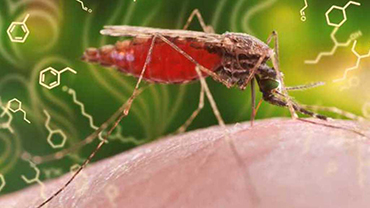Uptake of Artemisinin-based Combination Therapy for Treatment of Acute Malaria at Federal Capital Territory Abuja, Nigeria: a Retrospective Hospital Based Study

Abstract:
Malaria remains a major public health challenge
in Abuja. Considerable efforts have been made to reduce the prevalence of the disease;
however, the last decade of malaria control has witnessed increased support by government
and its partners in the areas of mass distribution of long-lasting insecticidal
nets (LLINs) and a massive scale up in malaria case management. Consequently, it
has become necessary to provide evidence-based data on the status of progress towards
malaria control. A retrospective hospital
based study on the uptake of Artemisinin-based Combination Therapy drug for treatment
of acute malaria was carried out using a five years hospital records from Wuse District
Hospital Abuja. All the records of patients diagnosed with malaria confirmed by Giemsa stained thick and thin peripheral
blood films were considered. Data was entered and analyzed
using SPSS Chicago version 25. Appropriate tables and mean numbers were displayed.
A chi square test was performed to determine the level of significance using 95%
confidence interval and p- value. Findings revealed a total of 22,934 patients were diagnosed with acute malaria
based on hospital records. Only 48.4% of the patients received Artemisinin
Combination Therapy (ACT) drugs. 32.1% of the patients were given non-ACT drugs,
9.3% of patients received Sulfadoxine – Pyrimethamine, 7.59% were given Chloroquine.
The study concluded that, The use of Artemisin base Combination Therapy (ACT) as recommended
by WHO has a significant influence on malaria treatment outcome.
Keywords: Artemisinin-based Combination Therapy, Malaria, Uptake,
Malaria.
References:
[1].
Alexander Dodoo
et al (2009) Pattern of drug utilization for treatment of uncomplicated
malaria in urban Ghana following national treatment policy change to artemisinin-combination
therapy. Malar J.
2009;8 2 Published online 2009 Jan 5. doi: 10.1186/1475-2875-8-2.
[2]. Charles
C Ezenduka et al (2014). Drugs use pattern
for uncomplicated malaria in medicine retail outlets in Enugu urban, southeast Nigeria:
implications for malaria treatment policy Malar J. 2014;13: 243.
Published online 2014 Jun 24. doi: 10.1186/1475-2875-13-243.
[3]. Chedi, b. a. z, et al
(2010) Interventional studies of anti-malarial drugs utilization in public health
facilities in kano, Nigeria.
[4]. Etuk E U,
Egua M A, Muhammad A A (2008). Prescription pattern of antimalarial drugs in children
below 5 years in a tertiary health institution in Nigeria. Ann Afr Med [serial online]
2008 [cited 2018 Jun 1]; 7:24-8. Available from: http://www.annalsafrmed.org/text.asp?2008/7/1/24/55688.
[5].
Federal Capital
Territory Health Statistics Bulletin 2016.
[6].
Federal Ministry
of Health and National Malaria Elimination Programme [NMEP] 2014).
[7].
National Bureau of Statistics (NBS), National
Malaria Indicator Survey (NMIS), 2015.
[8].
Samuel Chatio, et al (2015)
Adherence and Uptake of Artemisinin-Based Combination Treatments
for Uncomplicated Malaria: A Qualitative Study in Northern Ghana. PLoS One. 2015; 10(2):
e0116856.Published online 201. doi: 10.1371/journal.pone.0116856.
[9]. Timothy Davis et al (2005). Artemisinin-based combination therapies for uncomplicated
malariaMed J Aust 2005; 182 (4): 181-185. Published online.
[10]. World Health
Organization (WHO) Global malaria report 2000.
[11]. World Health
Organization (WHO) Global malaria report 2014.
[12]. WHO manual on drug utilization 2003.

